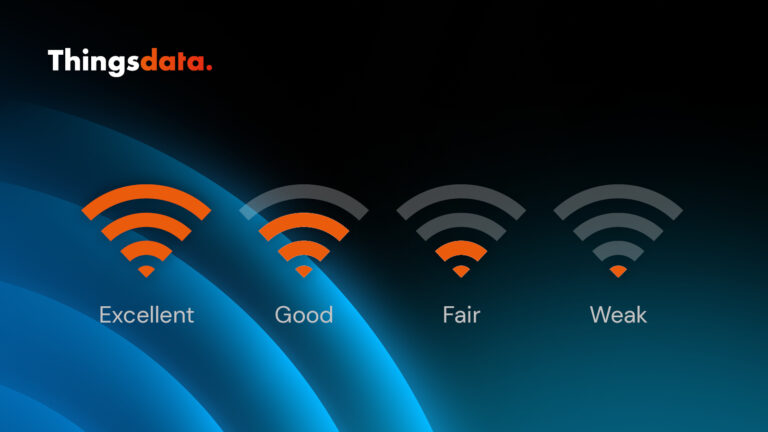It is vital to provide your devices with a stable network connection, often expressed in RSSI and RSRP. These parameters are crucial for displaying the signal strength and performance of the connection. We are happy to explain what both terms mean and what to look out for when reading them.
What is RSSI?
RSSI stands for Received Signal Strength Indicator. It indicates the strength and reliability of radio frequencies when they reach the receiver, such as an antenna or device. RSSI measures signal strength in any wireless system, providing information about the received signal strength for different types of radio frequency communication. It clearly indicates the stability of your network devices’ connectivity, regardless of the wireless connections used.
RSSI signal strength measurements are displayed in negative values; the closer the value is to zero, the stronger and better the signal. It’s important to note that RSSI values are not universally standardized, so their interpretation may vary depending on the device manufacturer.
| RSSI | Signal strength | Description |
| >= -70 dBm | Excellent | Strong signal with maximum data speeds |
| -70 dBm to -85 dBm | Good | Strong signal with good data speeds |
| -86 dBm to -100 dBm | Fair | Fair but useful, fast and reliable data speeds may be attained, but marginal data with drop-outs is possible |
| < -100 dBm | Poor | Performance will drop drastically |
| -110 dBm | No signal | Disconnection |
Tabel 1: 2G and 3G signal levels
| RSSI | Signal strength | Description |
| > -65 dBm | Excellent | Strong signal with maximum data speeds |
| -65 dBm to -75 dBm | Good | Strong signal with good data speeds |
| -75 dBm to -85 dBm | Fair | Fair but useful, fast and reliable data speeds may be attained, but marginal data with drop-outs is possible |
| -85 dBm to -95 dBm | Poor | Performance will drop drastically |
| <= -95 dBm | No signal | Disconnection |
Tabel 2: 4G signal levels
What is RSRP?
RSRP, or Reference Signal Received Power, is a specific form of RSSI measurement used to gauge the strength of mobile signals over both full bandwidth and narrowband. The bandwidth determines the actual speed of your connection. In network solutions that rely on mobile technologies such as 4G and 5G, RSRP plays a crucial role.
Measuring RSRP across the full bandwidth provides insight into signal coverage and network capacity. Narrowband measurements assess signal quality in specific frequencies, essential for optimizing network performance and troubleshooting. These measurements are crucial for communications using specific parts of the radio spectrum.
RSRP offers a more accurate measurement of cellular signal strength received by the network device, helping you make informed decisions about network infrastructure, possible improvements, and service quality assessment (QoS). Like RSSI, RSRP is measured in negative values and can vary depending on the manufacturer’s scale.
| RSRP | Signal strength | Description |
| >= -80 dBm | Excellent | Strong signal with maximum data speeds |
| -80 dBm to -90 dBm | Good | Strong signal with good data speeds |
| -90 dBm to -100 dBm | Fair to poor | Reliable data speeds may be attained, but marginal data with drop-outs is possible. When this value gets close to -100, performance will drop drastically |
| <= -100 dBm | No signal | Disnonnection |
Tabel 3: Signal strenght of RSRP
More Information
For more information, please contact us at +31-85-0443500 or email us at info@thingsdata.com.
Need reliable IoT SIM cards? Request our test kit for 3 free SIMs with 100 MB data for 3 months. Experience seamless IoT connectivity today.
Looking for a reliable IoT partner? Download our brochure for instant access to valuable insights about our services and IoT solutions.
